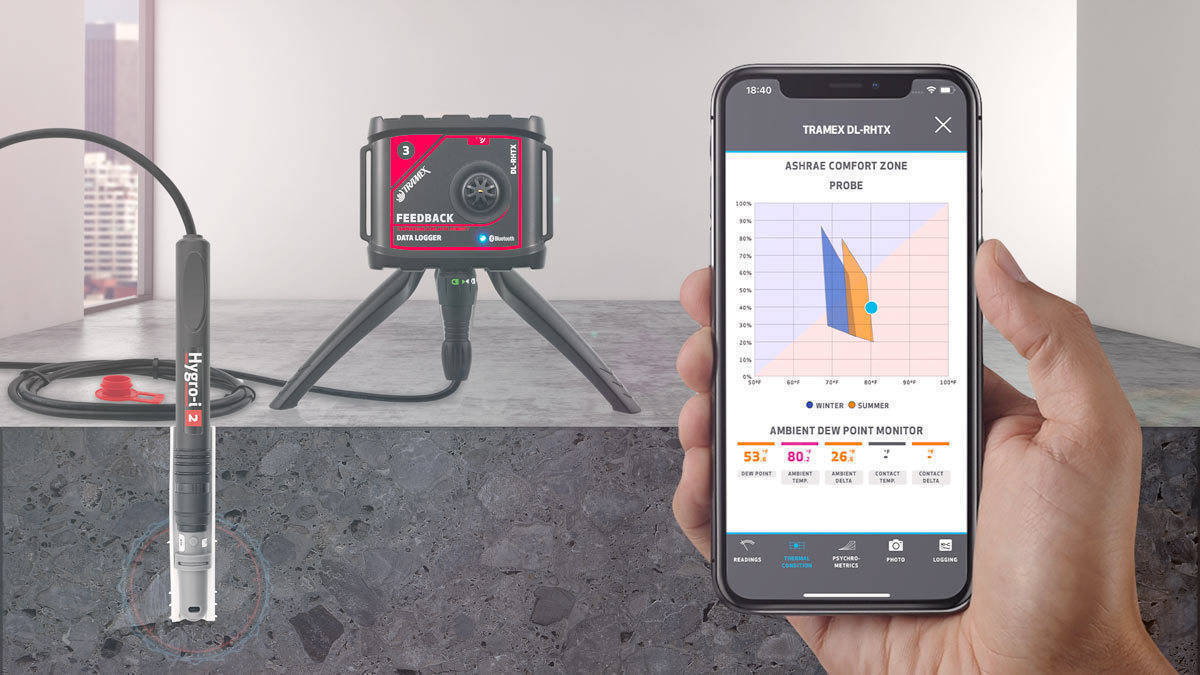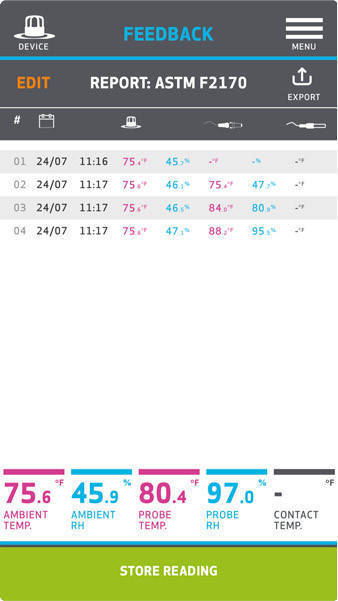
The FeedBack DataLogger from Tramex is designed with flooring installers and inspectors in mind, helping to make the job of moisture testing concrete much easier by allowing for storage of measurements of in-situ ERH as well as ambient conditions simultaneously. This can be done in a couple of useful ways. The first step, as always with testing of a concrete floor, is to perform an ASTM F2659 test with a concrete moisture meter such as the CME5 or the CMEX5, building up a picture of the overall condition of the slab in the fastest way possible.
ASTM F2659 testing allows the user to:
- Locate the highest reading (wettest) spots in each area, which wil be the most suitable for performing ASTM F2170 in-situ tests.
- Get an immediate picture of whether the concrete will be dry enough to pass the in-situ test, or if it will require more drying time or possibly a vapor barrier.
Performing ASTM F2170 in 5 Easy Steps
- Having found the most suitable locations to perform the test (and following all necessary safety precautions), 3 tests should be carried out for the first 1,000sqft and 1 test for every 1,000sqft after that.
- Holes should be drilled to 40% of the overall depth when testing concrete which is drying from one side only (i.e. ground floor) and 20% of the overall depth when testing concrete which is drying from both sides (i.e. upper floors).
- RH sleeves are then placed into the bottom of the cleaned holes, cap and seal them and leave for 24hrs to allow the airspace inside each sleeve to achieve equilibrium with the RH in the concrete.
- After equilibrium is achieved, caps should be removed from each RH sleeve and Hygro-i2® probes should be inserted into each sleeve and allowed to acclimate to the internal environment. The probe should be at the same temperature as the concrete before taking a reading.
- When readings do not change by more than 1% RH over 5 min. equilibrium can be assumed.
Using the Tramex Meters App, reporting tests could not be simpler, the FeedBack is automatically recording the ambient RH & temperature, in-situ RH & temperature as well as the location, time and date being stamped by the App in use with a cellular device in one of two ways:
Option 1: Reports can be given the title of the job site or room under test and readings recorded once the DL-RHTX is connected to the Hygro-i2® probe via the RHIE2B cable (which is supplied with the FBSK5.1 or FBZK5.1 kits). Readings are recorded and added to the report page by selecting "Store Reading".

Option 2: Using the camera function at the initial device selection stage (before connecting to the selected DL-RHTX) at the bottom of the page marked "Device Selected". Taking a photo of the DL-RHTX and selecting "Use Photo" will record a photographic image of the device with all readings as well as location, time and date stamp in the photo. This can be stored on the device or uploaded to a report. Watch this space for more articles and videos on how to make the most out of your FeedBack DataLoggers.